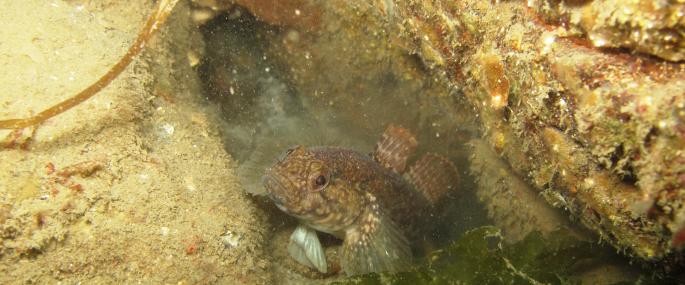The Rock Goby is a small, elongated, large-headed fish found in rockpools and shallow, rocky seas and is present in waters up to 15 metres deep. On its underside, the pectoral fins are fused to form a sucker which it uses to attach itself to rocks to prevent it being washed away by the waves.
Our seas and coastline are in need of protection if we are to keep our marine wildlife healthy. The Wildlife Trusts are working with fishermen, researchers, politicians and local people towards a vision of 'Living Seas', where marine wildlife thrives. This work has recently had a massive boost with the passing of the Marine Bill, promising sustainable development of the UK's marine environment. Do your bit for our Living Seas by supporting your local Wildlife Trust.
